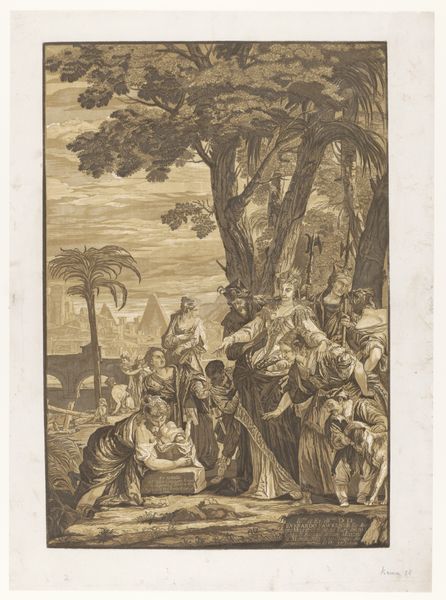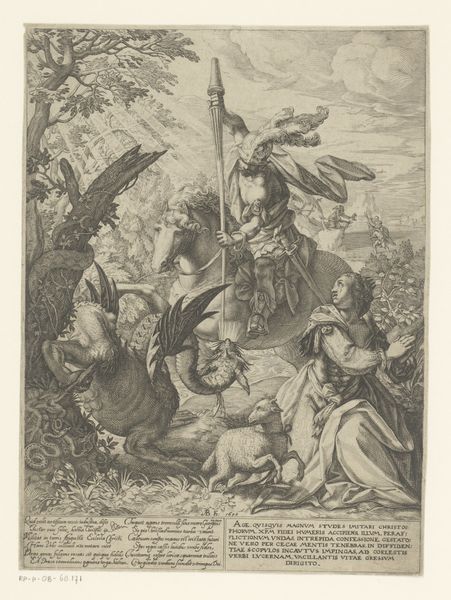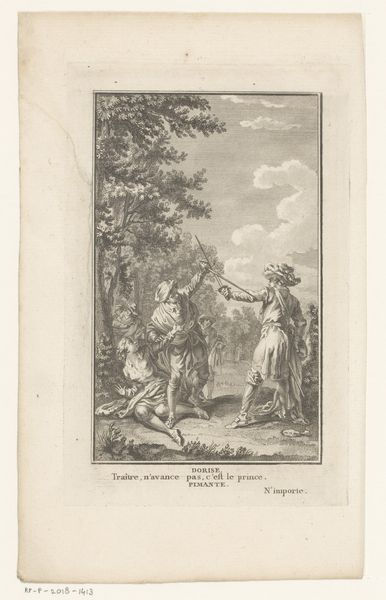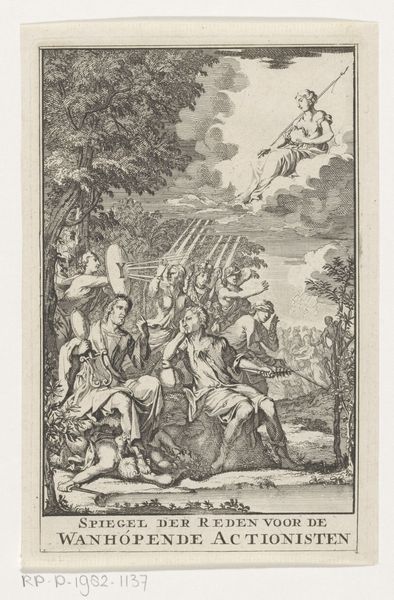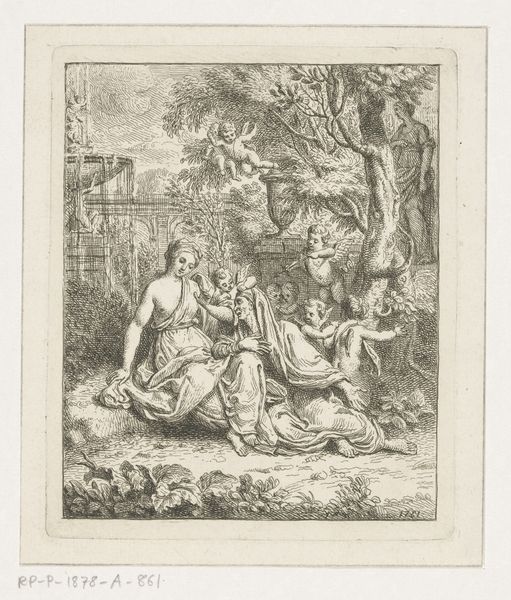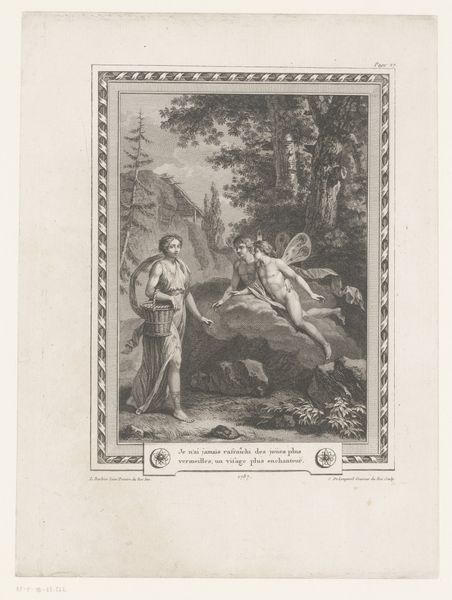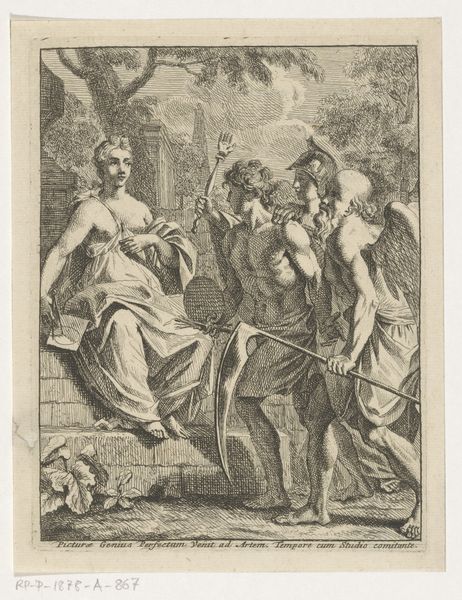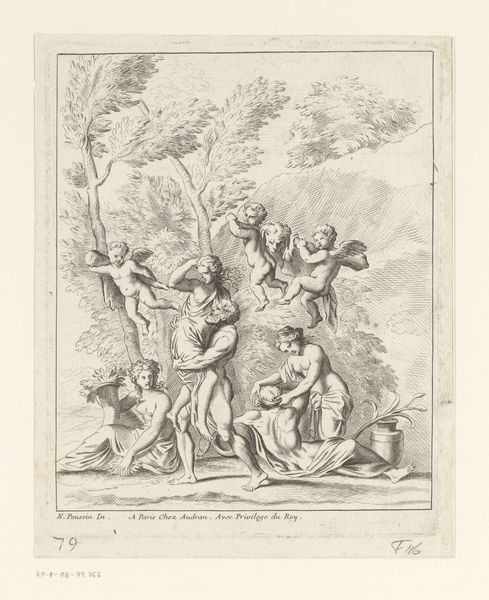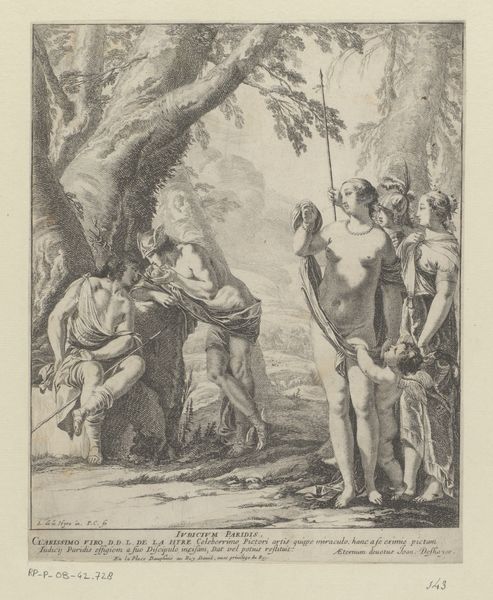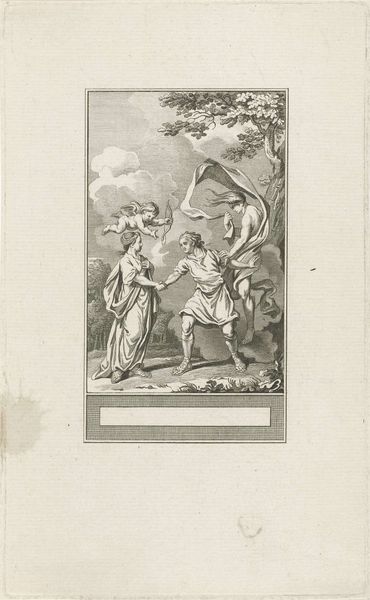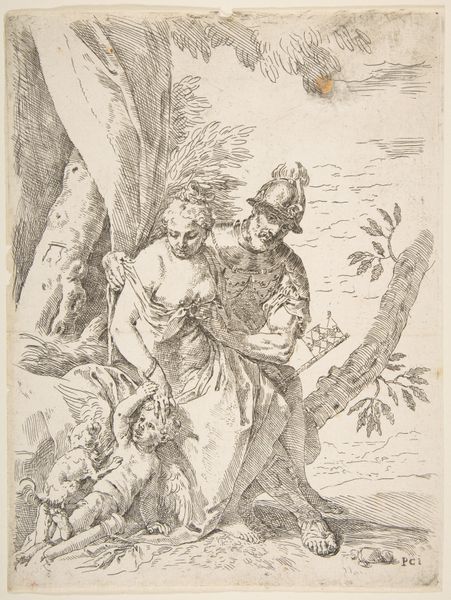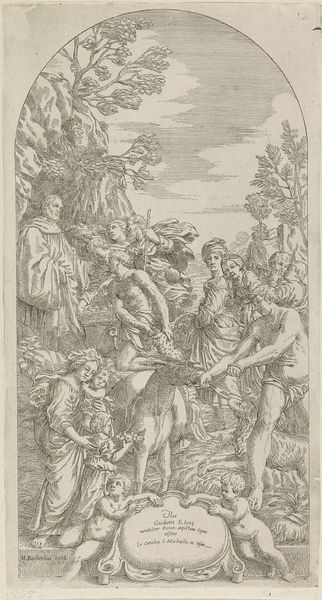
print, engraving
#
allegory
#
baroque
#
ink painting
# print
#
landscape
#
charcoal drawing
#
figuration
#
line
#
genre-painting
#
history-painting
#
engraving
Dimensions: 200 mm (height) x 133 mm (width) (brutto)
Hans Quist created this print, Kærlighed og Forfængelighed, using etching. The fine lines and details were achieved by applying acid to a metal plate, allowing the artist to create intricate scenes. The etching process itself involves a division of labor. From the preparation of the metal plate, to the careful application of the resist, each stage demands skill and precision. Quist then meticulously incised the design, exposing the metal to the corrosive action of acid. The varying depths of the etched lines give the print its tonal range and depth. This approach stands in contrast to the immediacy of drawing or painting, yet yields an image with its own distinctive graphic quality. Consider the labor required for printmaking at this time, and we can appreciate how this medium made images accessible to a wider audience, challenging traditional hierarchies between art forms. Etchings like this one reflect the changing social dynamics of art production and consumption in the 18th century.
Comments
No comments
Be the first to comment and join the conversation on the ultimate creative platform.
